Whether you hop on a plane to a new destination regularly or just love documenting your local adventures, there’s a good chance you’ll be taking loads of pictures! In this guide, I’ll be covering how to take better travel photos. No matter what camera or gear you’re using, these travel photography tips will be sure to help you level up your photography game and take better travel photos!
Disclaimer: This blog post may feature some affiliate links, which means I get a small commission if you make a purchase (at no extra cost to you). It’s one of the ways I can keep producing free guides and resources for my readers. Learn more about my affiliate policy here. Thank you for the support!
How To Take Better Travel Photos: Expert Tips and Tricks
I started taking travel photos about 15 years ago but only invested in my first professional camera in 2015. Fast forward to 2016 and I quit my 9-5 day job to start my own business and take travel photography full time. Since then I have partnered with some of the world’s biggest brands on photo projects, have had photos published in numerous magazines, and have also published my own coffee-table photo book. I’m 100% self-taught and haven’t gone to college for photography. There is SO much you can learn these days via the internet, in-person workshops, and by practicing.
So let me pass on some of the things I have learned about how to take amazing travel photos! This guide is aimed at all skill levels and for those with any type of camera (including phone photography). These tips are also for photographers and people who like to collaborate with photographers for their travel photos. I feature in a lot of my own travel photos and that’s because I partner with my husband and friends to create these images. Knowing more about what makes a good photo will help you guide your photographer/partner/friend to capture the best photos possible. Or you can use these tips to take your own self-portraits with a tripod! Let’s jump into it my top travel photography tips!
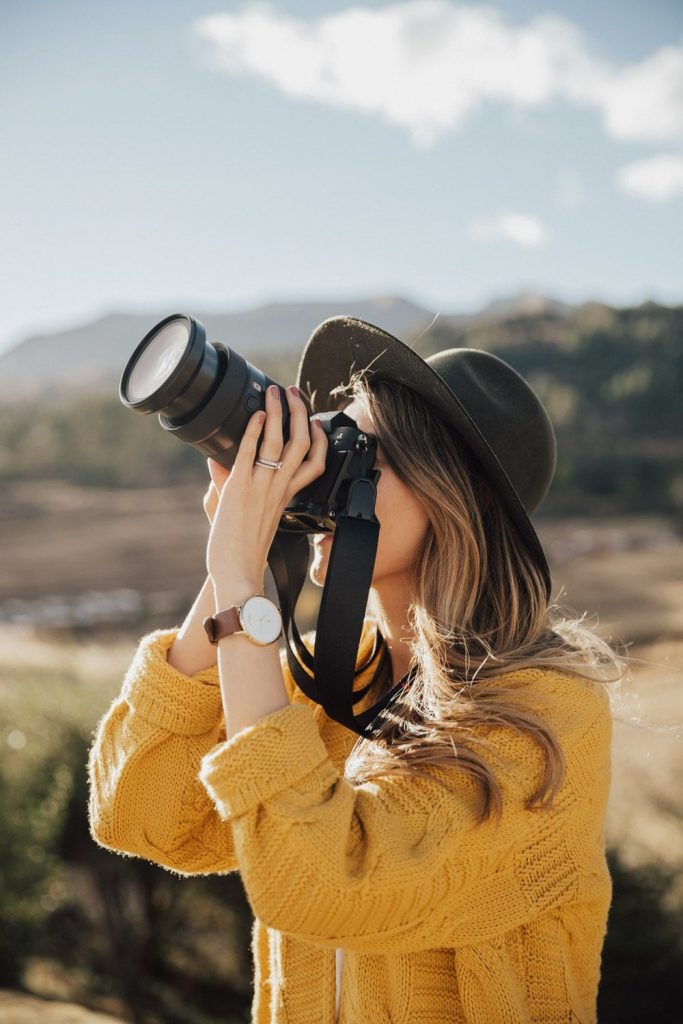
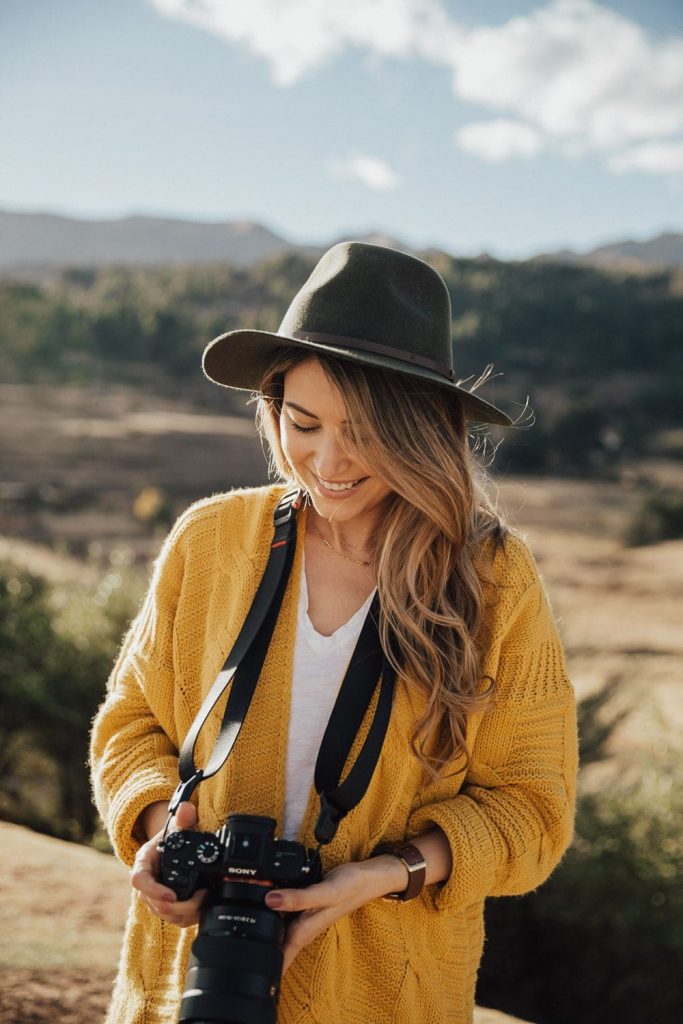
Invest In the Right Gear
There’s a big misconception in travel photography that in order to take beautiful travel photos, you need expensive gear. The truth is, you don’t need to own the latest and greatest. The best camera there is, is the one that’s in your hand – even if it’s just your phone!
You might have seen my ‘What’s In My Camera Bag‘ blog post and are feeling intimidated by the amount of gear I own. Don’t worry, photography is what I do for a living, and you don’t need this level of equipment unless it’s your profession. Some professionals don’t even have super expensive gear!
top recommendations for photography gear
Choose which approach best suits your needs and interests: phone, camera, or drone photography. Or it could be a combination of two or three. I personally use all three approaches to my photography work.
Creating travel photos with a Phone:
- High-quality phone camera such as the Apple iPhone 12 Pro / 12 Pro Max, Huawei P30 Pro, Google Pixel 4XL, Samsung Galaxy S21 Ultra 5G, Samsung Galaxy Note 10+, OnePlus 9 Pro
- Mini tripod such as a Joby Gorillapod (including the phone attachment). The Peak Design Travel Tripod also has a phone attachment and I find it super useful for phone photography and videos.
- Optional: Screw-on lenses such as the Xenvo Pro Lens Kit, Moment Anamorphic Lens. Or Apexel 36x Telephoto Lens
- Optional: Waterproof case cover such as those from Lifeproof
- Optional: AxisGo Underwater Phone Housing and Dome Port (for half over/half under style images)
Creating travel photos With a camera:
- DSLR or Mirrorless camera body, and/or an action camera like a GoPro
- Kit lens, or if you’re looking to upgrade a wider range, such as a wide-angle (16-35mm), middle range (24-70mm), and zoom (70-200mm, and 100-400mm)
- A sturdy and compact tripod that can hold the weight of your gear, and is compact enough to travel with
- Optional: Waterproof Housing (e.g. Aquatech) or waterproof camera (e.g. GoPro Hero 9)
Creating travel photos With a Drone:
- Drones like the DJI Mavic 2 Pro, or Mavic Air 2 are an excellent investment and provide a brand new perspective of many different locations
- Be sure to grab some extra batteries if you grab a drone for indeed flight time, and extra propellers in case you have any crash landings.

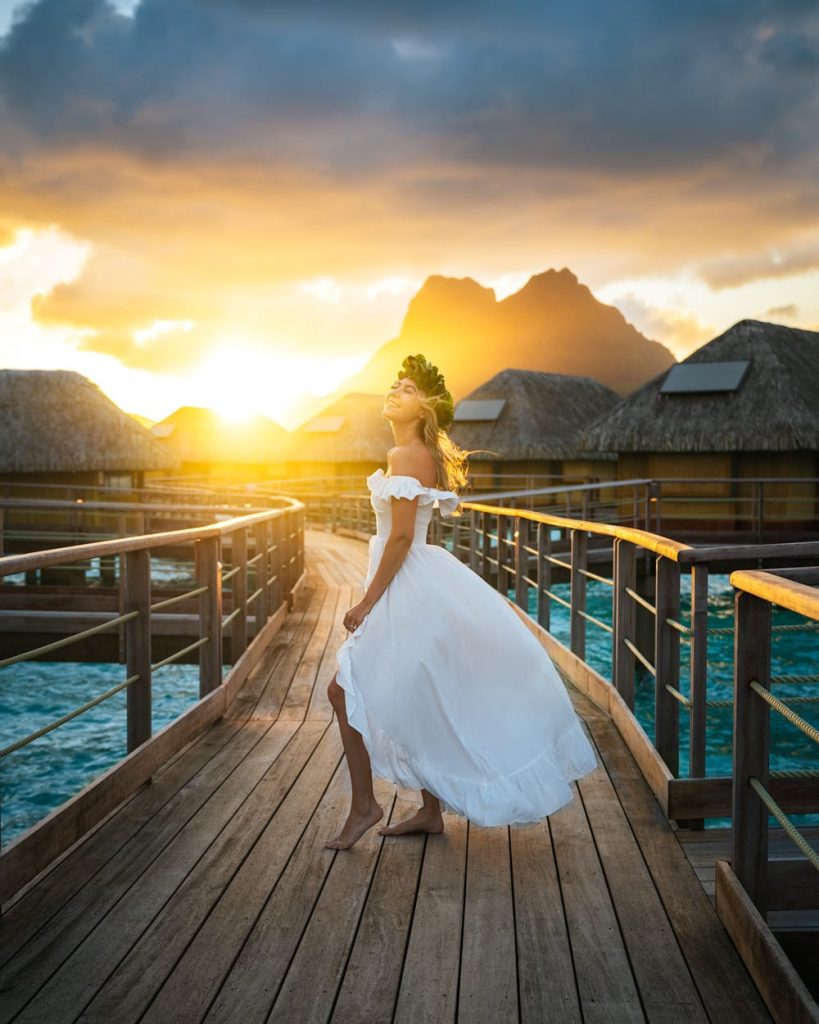
Take Photos At the Best Time
Here’s another important travel photography tip! When possible, you should always aim to shoot during golden hour, blue hour, sunrise, sunset. Typically, this is when you will experience the softest and most flattering light, colorful clouds, and the least amount of crowds! I love how quiet photo locations are during these hours, especially at sunrise. Don’t forget to pause for a moment and take it all in!
What is Gloden Hour?
You may have already heard of the term golden hour, which is generally considered the best time to take photos! Golden hour is approximately half an hour before and 15-45 minutes after sunrise and sunset. Golden hour is so named because early morning light is soft, and of course, golden! Keep in mind that these windows will vary significantly depending on the time of the year. I recommend downloading the app “Golden Hour” to find the optimal time. The photo above is an example of golden hour photography.
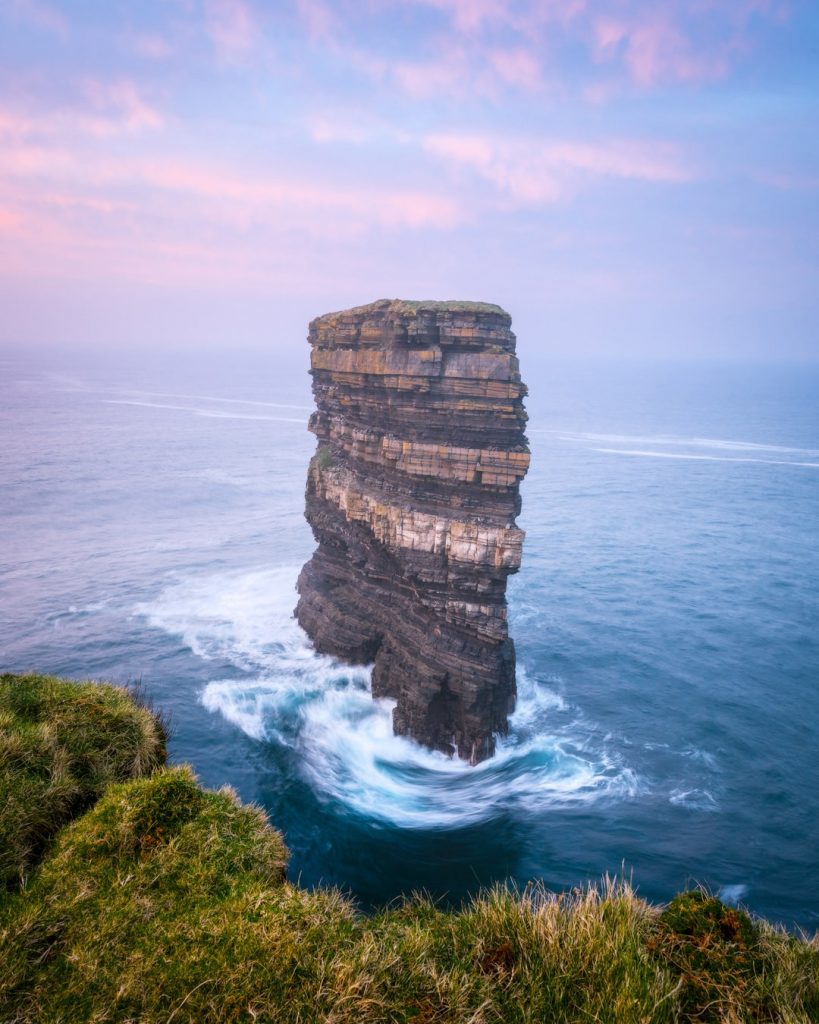
What is Blue Hour?
There is also so much beauty in the hour that follows the golden hour and it’s known as blue hour. Blue hour is the twilight period in the late dusk each evening, or the very dawn of the morning where sunlight takes on a predominantly blue hue and makes for unique lighting conditions.
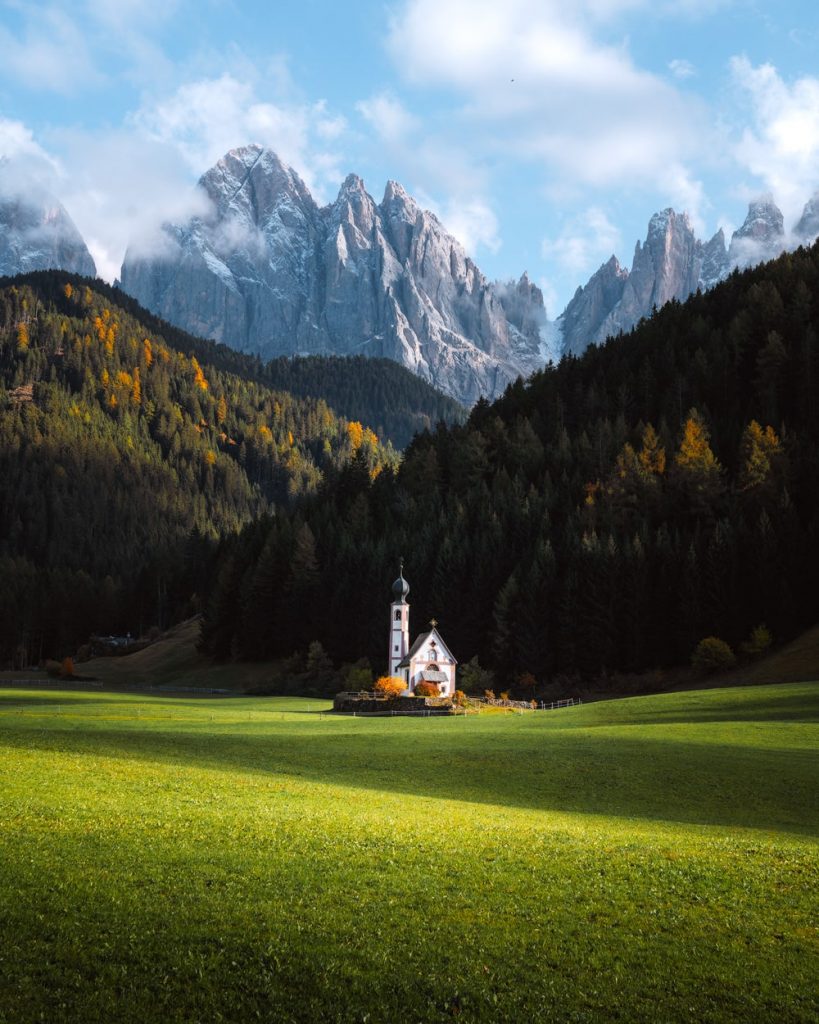
Tips for Shooting in Harsh Light?
As beautiful as golden hour and blue hour are, it’s not always possible logistically to shoot a location during those times. You’ll often find yourself exploring destinations in the middle of the day where you’re much more likely to experience harsh light. Here are some tips to help you still make the most out of these midday conditions!
- Always shoot in RAW and in manual mode to have more control over your settings. A RAW image stores more information about a photo and allows you to have more freedom when editing later on.
- Try shooting with the sun off to the side or behind the subject. If it’s a cloudy day, wait for clouds to pass to diffuse the light.
- Play around and get creative with shadows. Shooting your subject in the shade is also a great option, especially if the scene’s lighting is consistent.
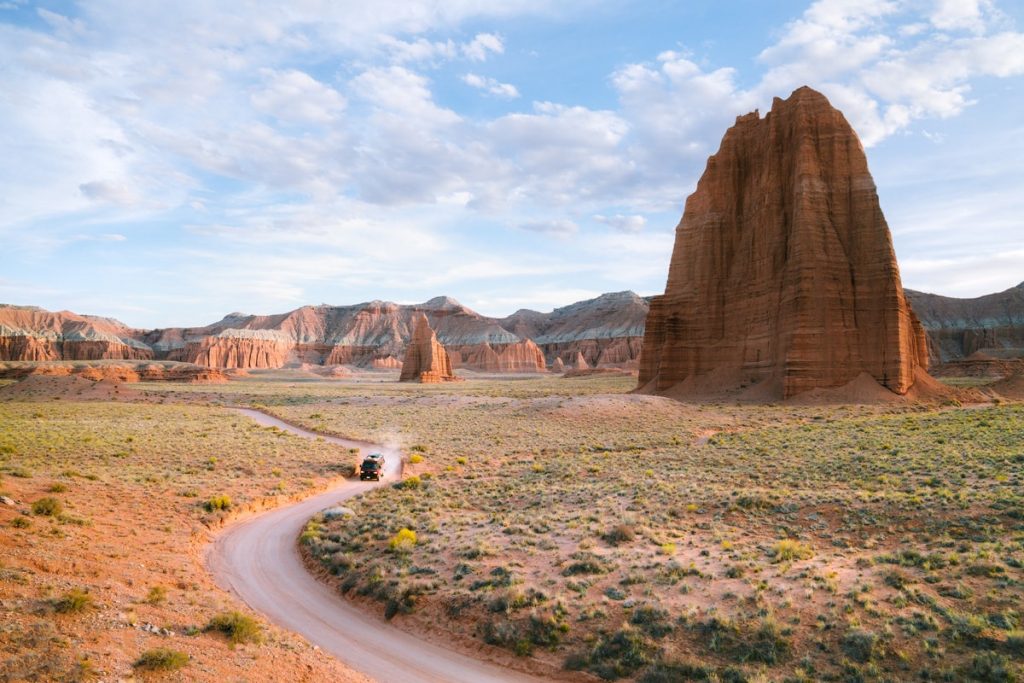
Set Up a Good Composition
Composition is one of the most important elements of photography, and one that can mean the difference between capturing an image that is captivating compared to a lifeless image. Capturing the beauty of the world around us in a single frame can be a challenge, but understanding composition is a great tool that will help you reflect a mood in your photos. Looking for all these elements and mastering techniques will get easier in time (the more you get out there and practice!) Below are some key things to consider.
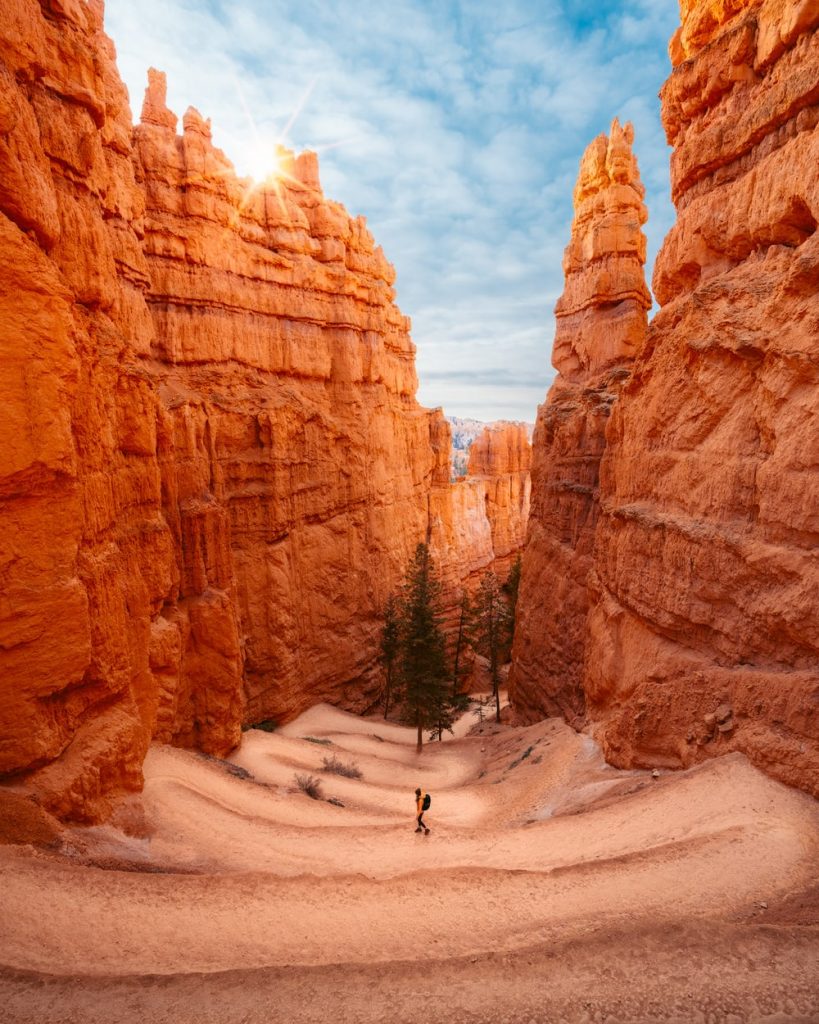
Leading Lines
Think about how you could work with your surroundings to guide the viewer’s eyes to the main subject. For example, the S-curve in the road trip image two back, or the winding trail in the image above. Both of these lines help draw your eye to the subject. Leading lines can be found in buildings, shadows, rivers, trails, roads, and more. Open your eyes to what’s around you! Look at roads, crouch down low, or use branches nearby as inspiration!
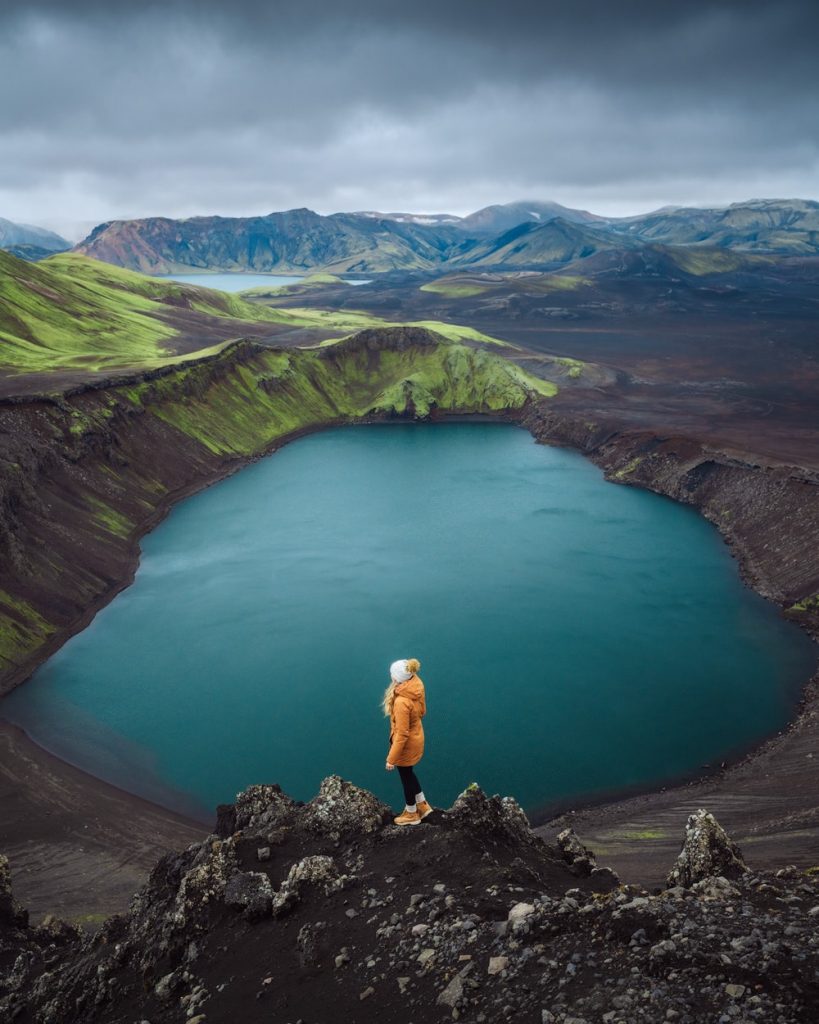
The Rule of Thirds
The basic principle behind the rule of thirds is to imagine breaking an image down into thirds (both horizontally and vertically) so that you have nine parts. These lines intersect where your viewer’s eyes will naturally be drawn to, so it’s a good idea to place your subject within them.
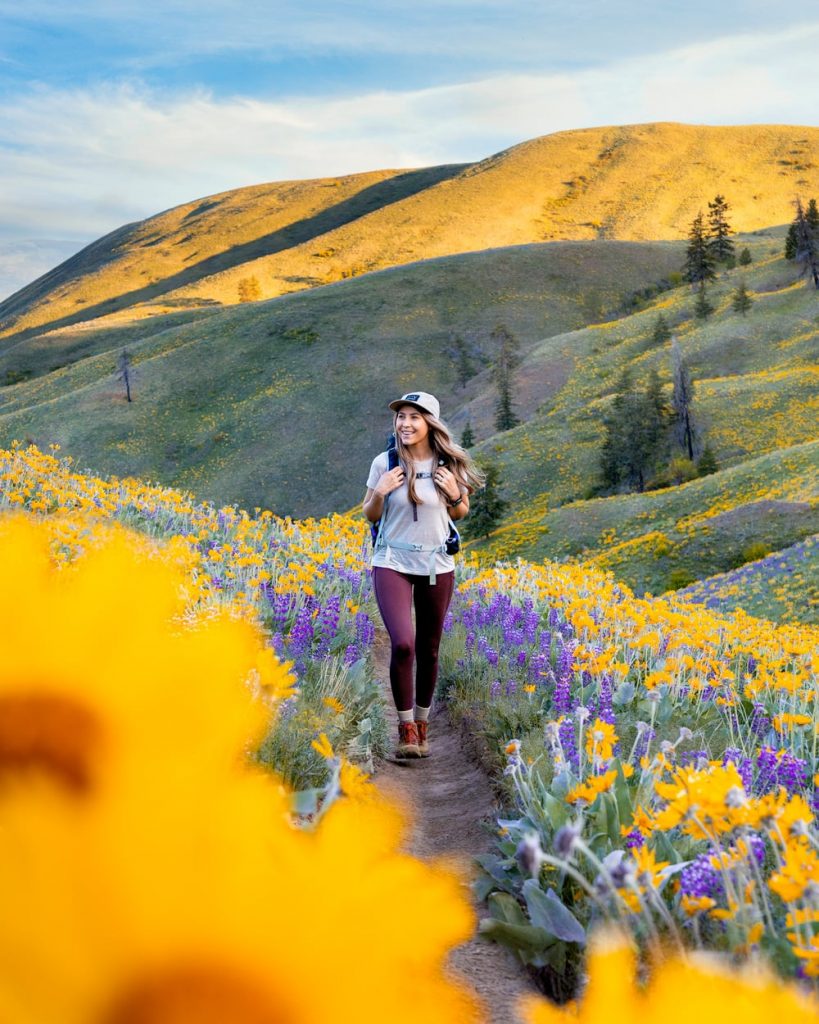
Depth of Field
Depth of field is the distance between the closest and farthest objects in a photo that appears acceptably sharp. Play around with your aperture and how close subjects are to the lens. Create softer foregrounds and backgrounds for a dreamy feel and to help draw the viewer’s attention to the desired subject. For example, the flowers in the foreground of the photo above help draw your eye to the subject and create more interest to the image.
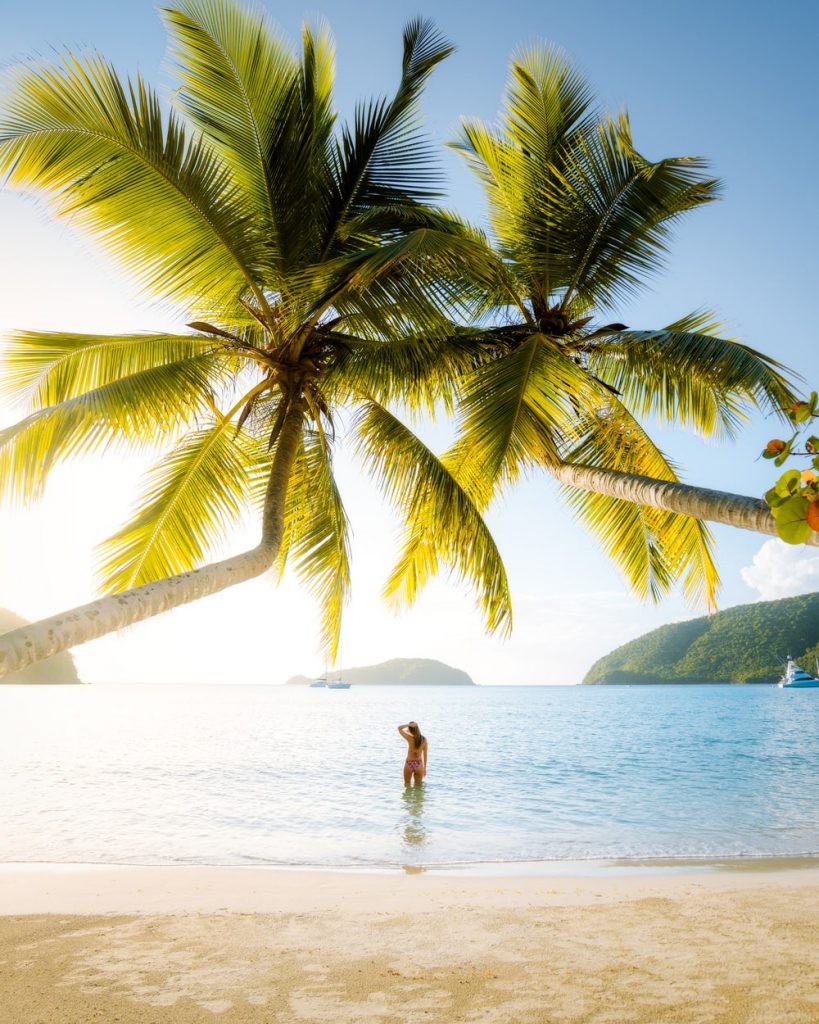
Distractions
Always be on the lookout for ways you could simplify your image by removing distractions. E.g. in this palm tree photo (above), we quickly cleaned up some branches and twigs before snapping this image. You can also use Lightroom or Photoshop to edit out distractions in post-production. For this photo, I edited out a few dark splotches of sand but didn’t get rid of everything so it still looked natural and believable. This helps to keep the image about us and the scenery, not any messy debris.
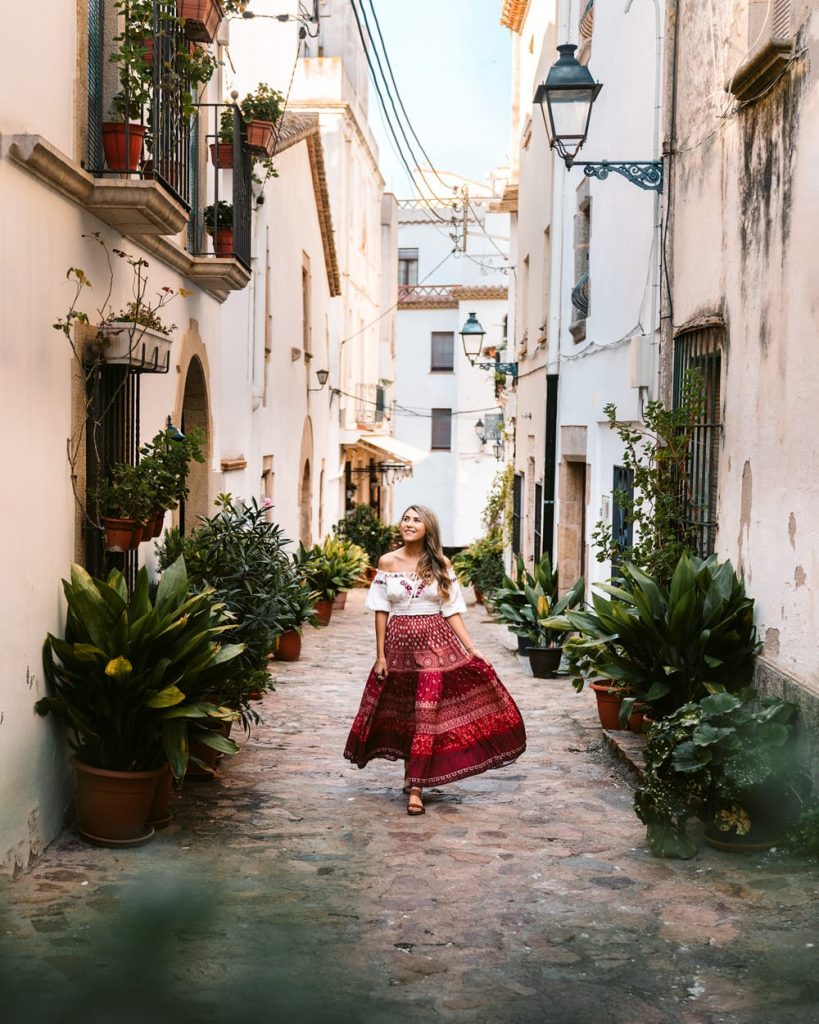
Use of Color
Understanding how colors work together and contrast each other will help you take your photography to the next level. I often consider how the colors of my outfit will complement certain scenes, or allow for me to stand out in a busy background. E.g. in the photo above, the red skirt helps draw your eyes to the subject in this Spanish alleyway full of distractions.
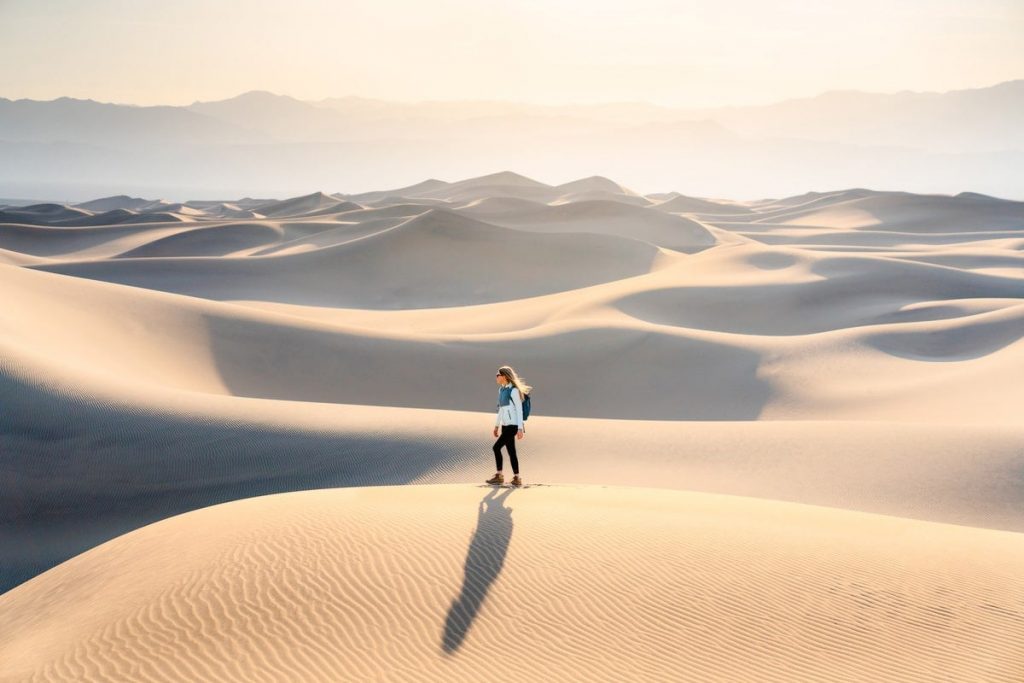
Add a Human Element
In order to take better travel photos, you should consider adding a human element to an image to show scale and share a story about the adventure. It can entice the viewer to imagine standing in that person’s shoes, experiencing the same magical moment. Additionally, including human figures in landscape photography provides the added benefit of both a focal point and a guide to scale.
Here are some of the best ways to incorporate more human elements in your photos:
- Capture the person/people in a natural action, e.g. walking through a river, along a path, etc. This will look less staged and show a more realistic depiction of what was happening. This is also a great technique when your subject may be a little camera shy or nervous about posing for photos.
- Landscapes often look more dramatic when a person is added for scale. Consider keeping the person small to really show just how larger than life the scene was.
- Make sure you position the person against a backdrop in which they will stand out, and consider what they are wearing. Bright and colorful clothing often works best, but each situation is different.
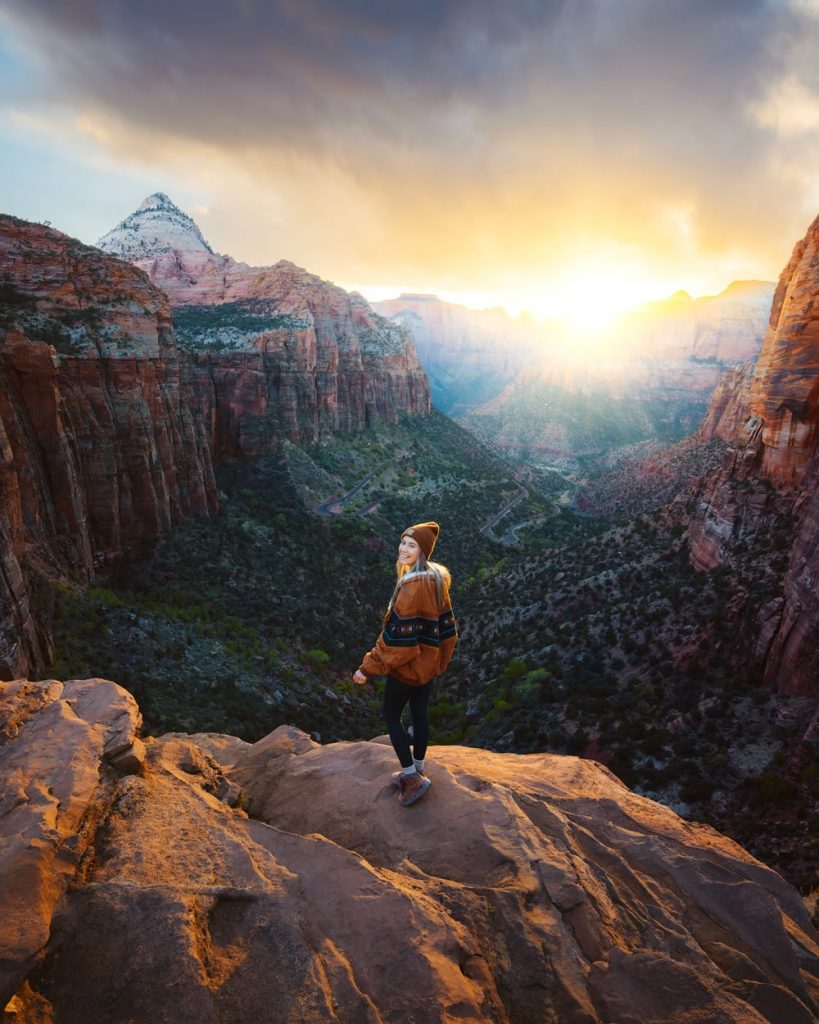
Storytelling With Your Travel Photos
Consider that you have the ability to capture and freeze a unique moment in time, all because you chose to pick up your camera or phone. An amazing travel photo should evoke feelings in the viewer, whether that be of awe, happiness, sadness, or simply wanderlust. Afterall, a picture is worth a thousand words – or so the saying goes.
One of the many things I love about photography is that it has the ability to convey stories to those that view them. Our brains are hard-wired to respond to stories—the more compelling, the better, and creating a story through a static image takes some practice! To find an interesting story to capture, all you need is to be there in the moment and let events unfold around you to catch great impromptu scenes when they show up.
Single shot or a series?
Not all single images tell a story. To capture a story, consider taking multiple pictures of different elements to convey how a place felt in real life. Try mixing it up with various shots, including small details, people, scenery, and some that show textures. Think of each picture as a piece of the puzzle that makes up an emotion or feeling.
writing Captions
Captions are an integral part of a photo story that should help the viewer understand each image. Still, it is crucial to keep in mind that while captions may expand your understanding of an image, it’s the image itself that should tell the story – never the other way round.
Storytelling Elements
- Consider body language and facial expression to convey a certain feeling and help narrate the story.
- Get to the level of your subject. In particular, photographing children and wildlife from their level often portrays more emotion and feeling than taking the same image from above.
- Contemplate sharing a story set (multiple images from the same place or experience).
- Adding a caption to your image will also help convey the story and provide context for your reviews.
- Consider focusing on what you as the photographer are feeling in that moment, e.g. are you elated? Maybe focus on bright/colorful scenes. Sad? consider capturing the moodiness of a landscape
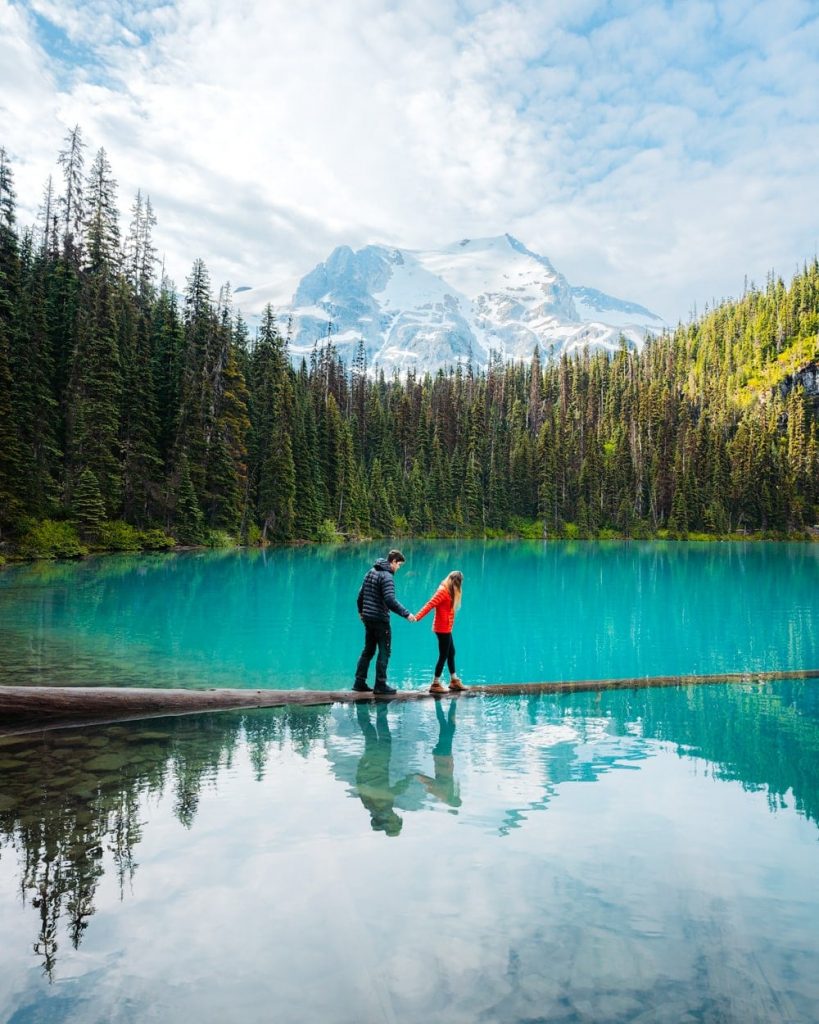
How To Take Amazing Travel Selfies
“Selfies” often get a bad rap, mostly due to tourists using selfies sticks and people rudely taking over a spot so others can’t capture their own images. There are better ways to take epic selfies…
- Use a tripod for your camera or phone. Some popular brands are Manfrotto (DSLR, mirrorless) and Joby (phone, compact camera). GoPro sticks & tripods are also very effective if you use one of their action cameras.
- Use some sort of self-timer, in-built intervalometer, or remote control shutter release. Most cameras and phones have a countdown self-timer and many cameras can now connect to smartphone apps for the purpose of using them like a remote.
- Set up your desired image and then simply run into the shot or use your remote to capture the moment!
- Can’t get your hands on a tripod? Don’t be embarrassed to politely ask someone else to take your photo (show them how to use your camera first and be careful of thieves).
Read next: How to Take Stunning Travel Photos as a Couple
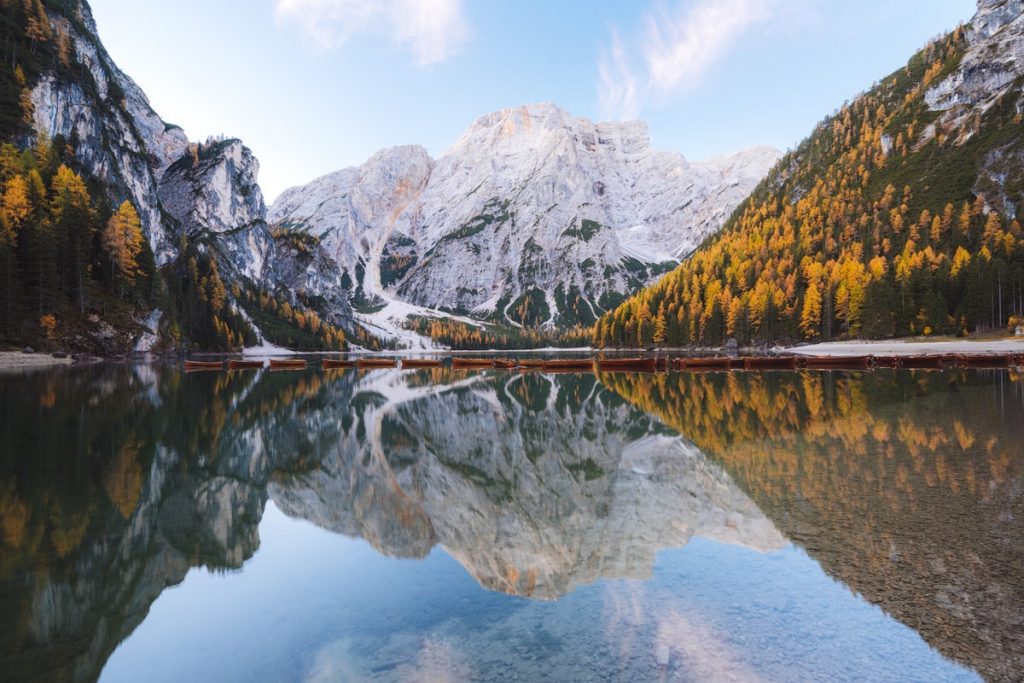
Improve Your Photo Editing
Another important element to take better travel photos is after you shoot, and begin to edit. Applying some basic editing to your images will make a world of difference. There are many different ways and programs used in pho editing, but I am listing the basics and my go-to’s below.
PRE-EDITING CONSIDERATIONS
If you are planning to capture images on your camera, be sure to have your settings on RAW rather than JPG. This will allow you to edit your images with much more range and precision.
SUGGESTED photo editing SOFTWARE
Phone Images
- Adobe Lightroom
- Snapseed
- VSCO
Camera Images
- Adobe Lightroom
- Adobe Photoshop
- Capture One
WHICH AREAS TO FOCUS ON:
- Exposure
- Contrast
- White balance
- Saturation/Vibrance
- Color hues
- Applying a vignette/ graduated filters
- Clone stamping out any major distractions
- Cropping the image
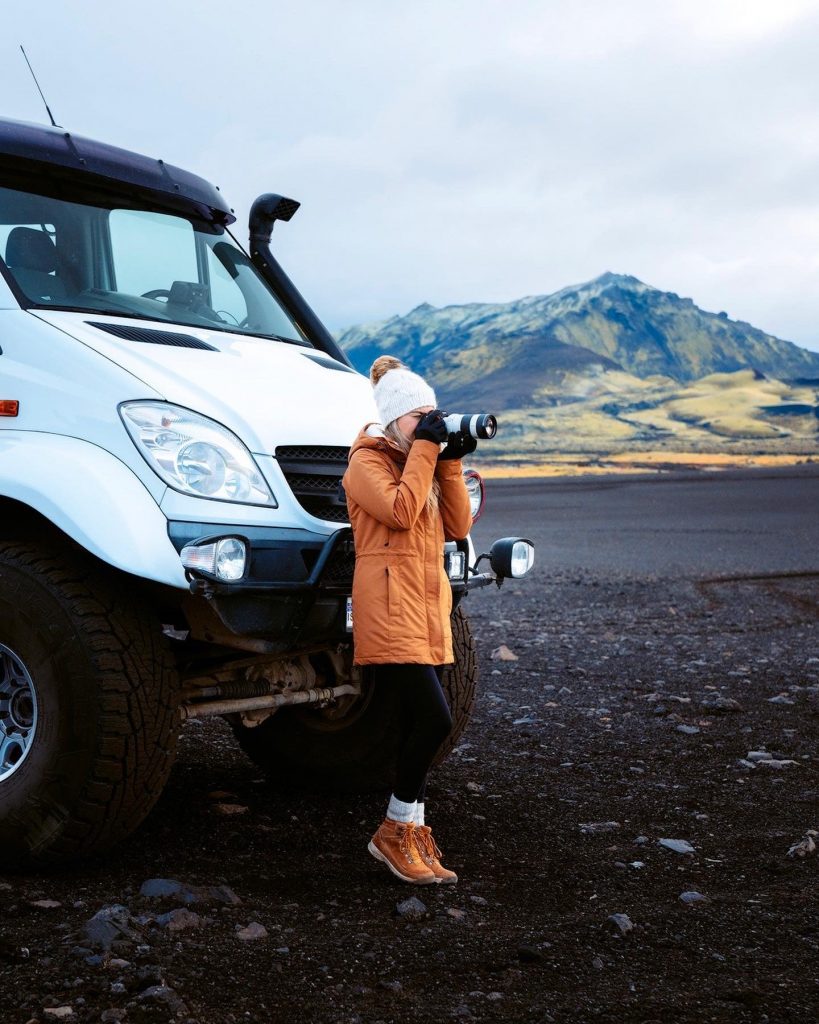
Travel Photography Practice ideas
Photography is an ongoing learning experience. Even the most professional shooters are constantly learning new ways to capture scenes, travel photos, and their preferred editing techniques. Don’t lose heart if it doesn’t all come together straight away!
TRY THESE BEFORE YOUR NEXT TRIP:
- Practice shooting at a local attraction/tourist spot. Try different compositions and push yourself to take a few selfies.
- Challenge yourself to explore a local destination with the intent of telling a story. Put together 10 images that demonstrate what you were feeling in that moment. Share the story set with your friends and family and ask for feedback.
- Be sure to enjoy the process because travel should be lived IN the moment not just when you review the images…
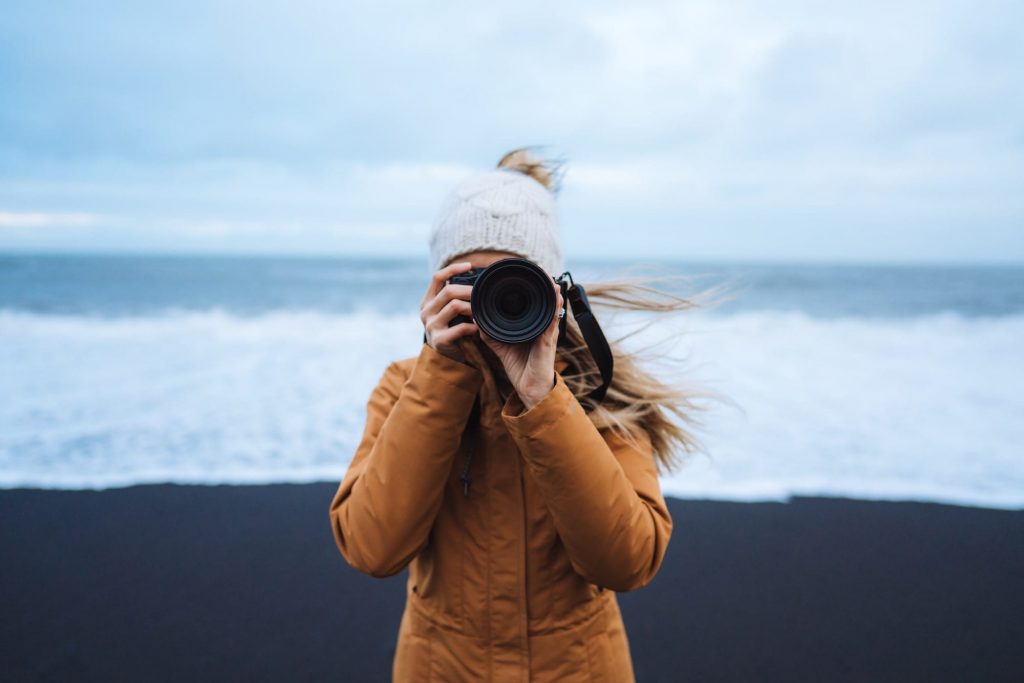
Final Thoughts on Taking Better Travel Photos
While reading some travel photography tips is definitely a great place to start, you’ll gain so much knowledge from testing things out and getting outside of your comfort zone! It won’t happen overnight, but over time your skills will improve — I promise! If you learned anything new about how to take better travel photos while reading this blog, I would love to hear from you and more about your own travel photography journey in the comments below.
PIN for Later
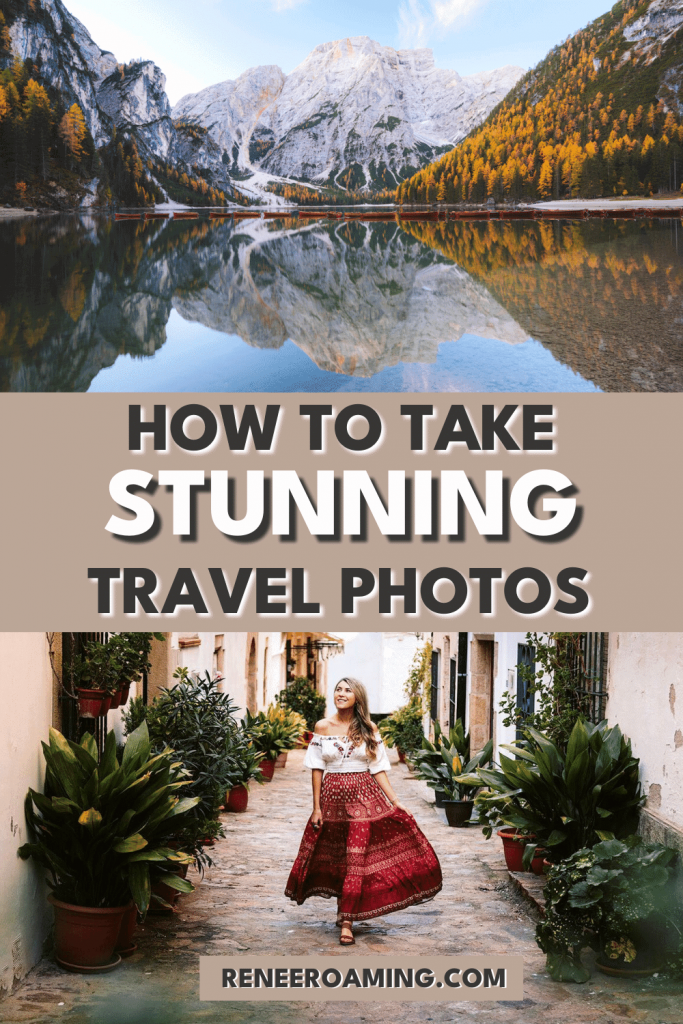
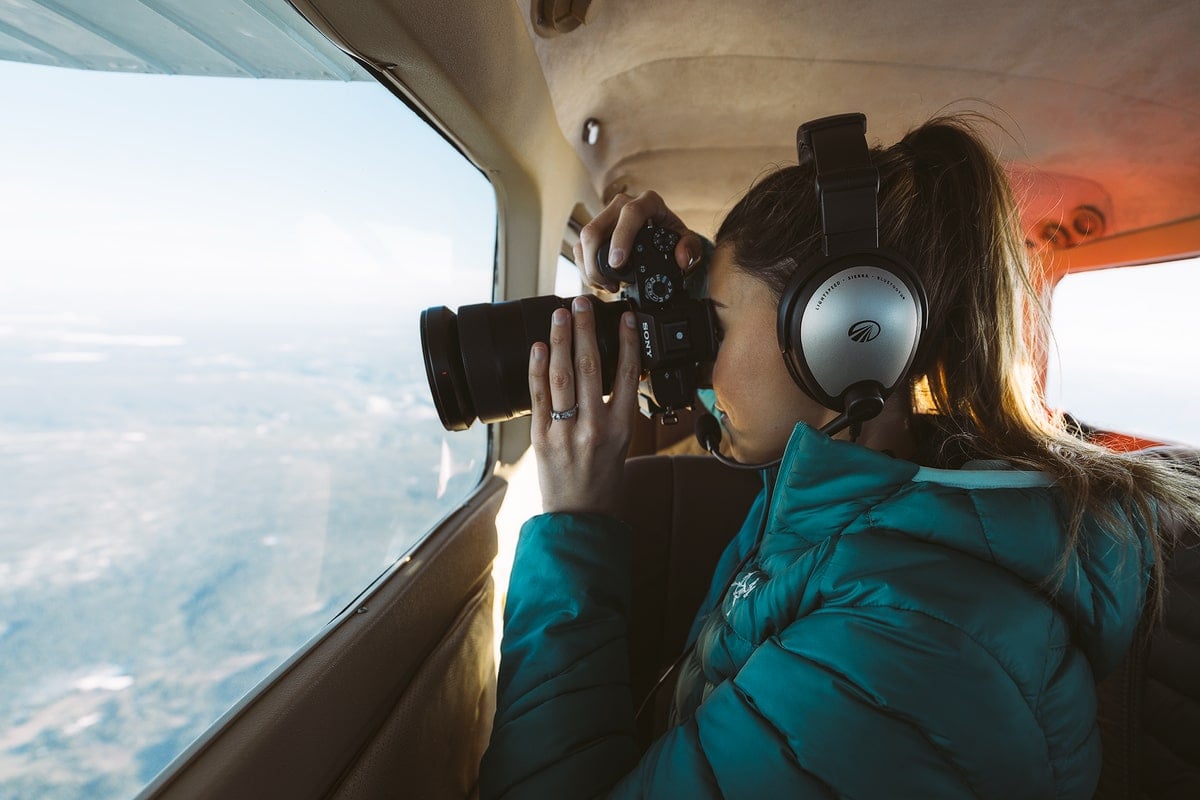
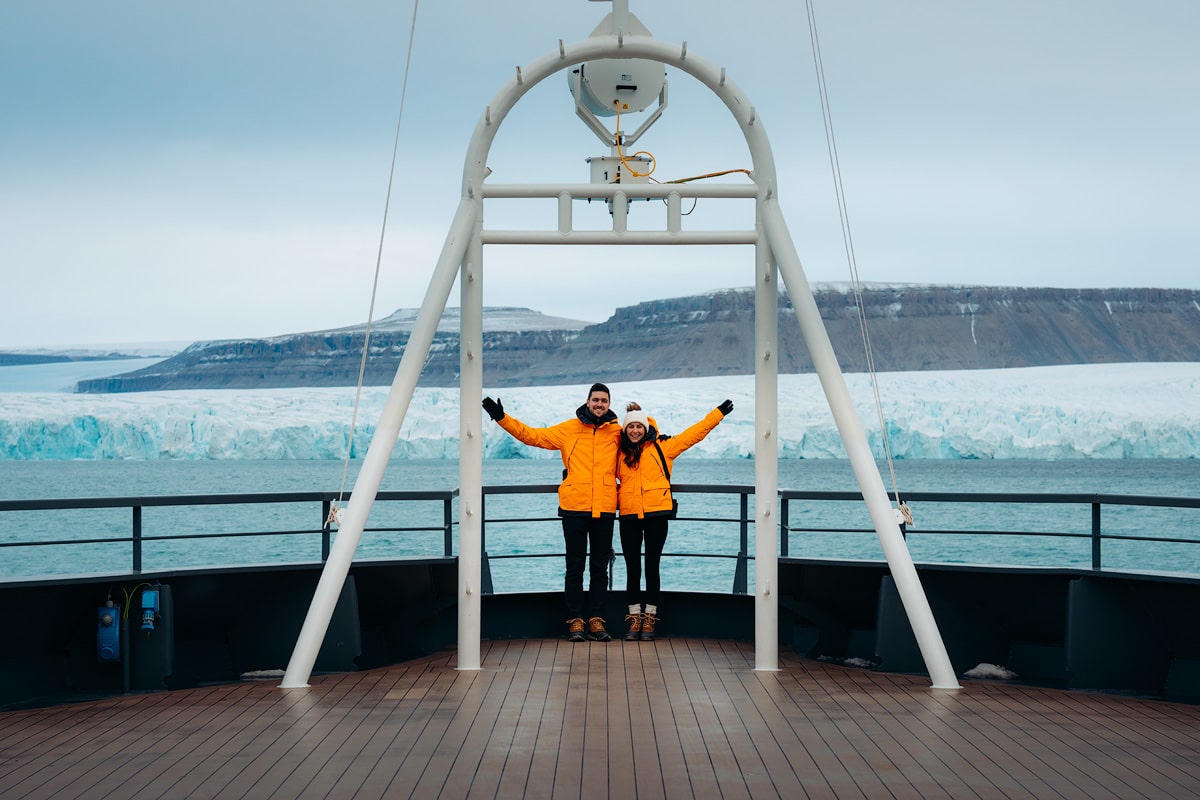
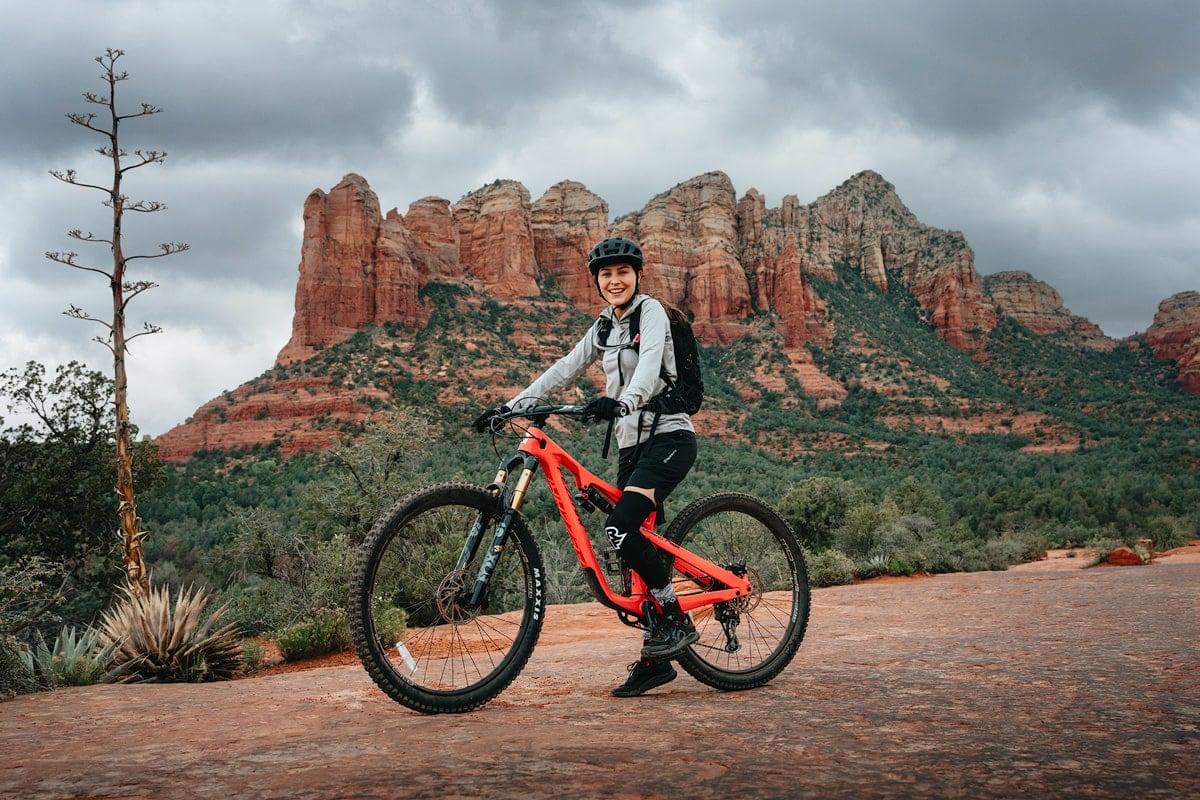
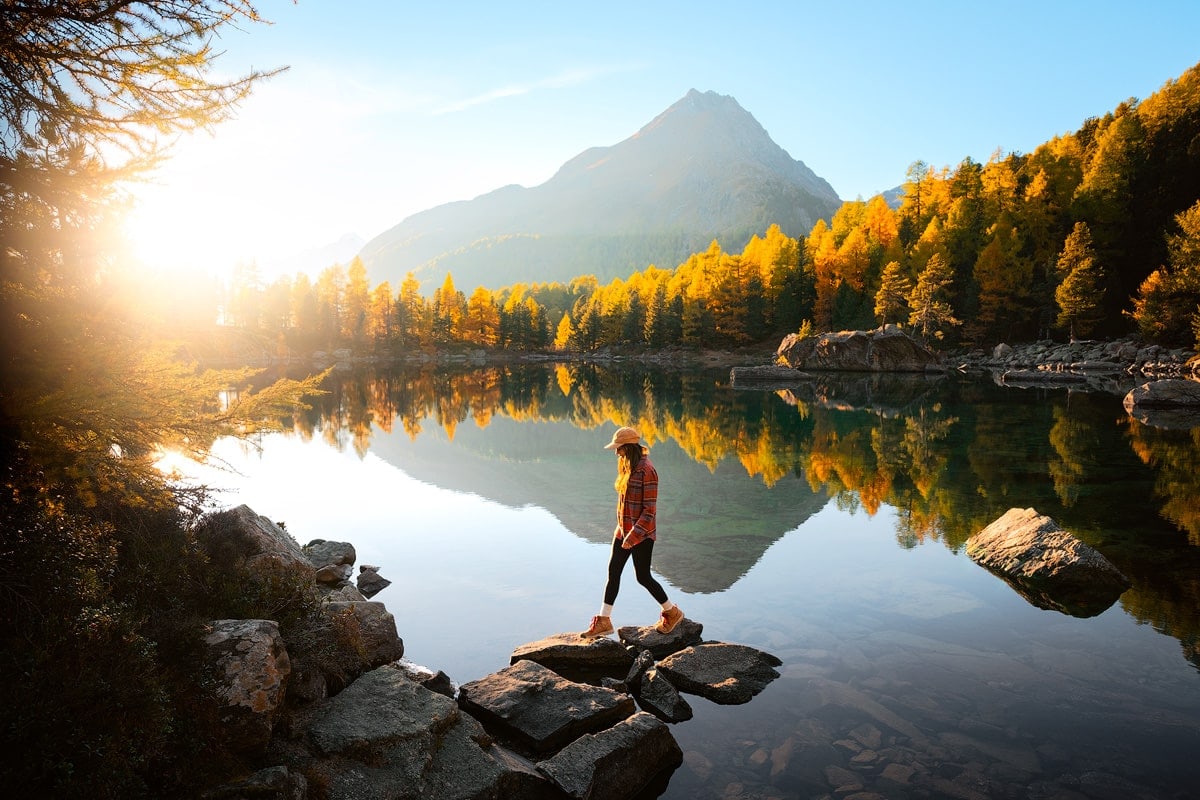
Well said keep it up
Enjoy the world tour while at home using your mobile phone. Yes Dude Theft Wars provides you with the experience of a world tour
Nice idea it helps me when i am trying to edit images for my websites.
Enjoy the world tour while at home using the mobile. Yes WorldBox provide you an experience of world tour. such a amazing article .
Mastering travel photography isn’t solely about expensive gear; it’s about leveraging the right tools effectively. Even with just a smartphone, understanding composition and lighting can yield incredible results. However, for those serious about enhancing their craft, investing in versatile apps like Alight Motion can unlock a world of creative possibilities. With its advanced features tailored for on-the-go editing, Alight Motion empowers photographers to achieve professional-level results effortlessly. If you want to level up your photography and take better travel photos and videos, visit our website:motionalightapk.com
Discover the magic of capturing amazing moments with PicsArt, the ultimate Android app for enhancing your mobile photography. Download it for free and unlock endless creative possibilities. Explore new horizons, push your boundaries, and watch your skills soar over time. Your journey to capturing breathtaking travel photos starts here. Share your experiences and insights in the comments below—I can’t wait to hear about your photography adventures! Visit picsartszone.com now for more information.
Enjoy the world tour while at home using the mobile. Yes WorldBox provide you an experience of world tour
Well Said & Great Achievement.
Gosh, I love your website! And your photography tips. I’m hoping to get into B&W photography and would love to take better travel photos. Your tips and equipment recommendations are excellent. So glad to find you on the interwebs!
I love this so much Renee!
You’ve gone into so much amazing detail which is so so sooo helpful!
I’ll have to go over this again as its amazing and there definitely is a lot to learn and take out with me on my next trip with my camera!
Thank you!